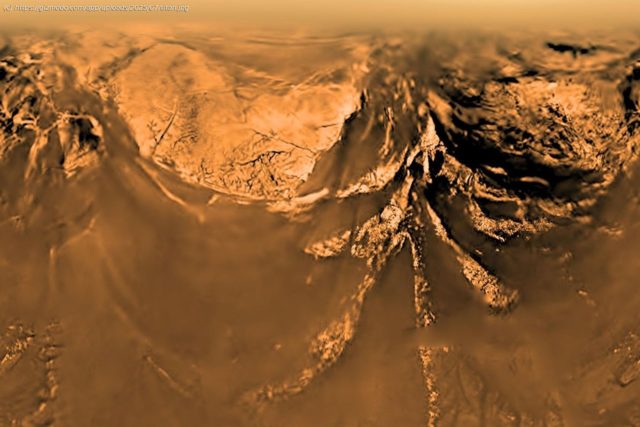There could be life as we know it, or rather as we don’t know it, forming on Saturn’s largest moon.
the Huygens probe separated from the Cassini spacecraft and landed on Titan’s sandy surface. The probe survived for 72 hours on Saturn’s largest moon, revealing a world that is chemically complex and more Earth-like than expected. For years, scientists have been intrigued by Titan as an alien world that might have the right conditions to host life, albeit in a very different form than on Earth. New research by NASA reveals that molecular precursors to life could form in Titan’s methane lakes, allowing us a chance to learn how life originates and evolves in the universe.
In a recently published paper in the International Journal of Astrobiology, a team of NASA researchers illustrates how vesicles, small, membrane-bound bubble-like compartments or sacs, could form naturally in the lakes of Titan. Vesicles are thought to play a vital role in the formation of life, an important step in making the precursors of living cells. The paper examines how the conditions for life could evolve in a vastly different environment than Earth, shedding light on our search for extraterrestrial life in the universe.
Titan is the only other world, apart from Earth, that’s known to have liquid on its surface.
Start
United States
USA — software Titan’s Methane Lakes Could Form Bubble-Like Structures Essential to Life, Scientists Say






